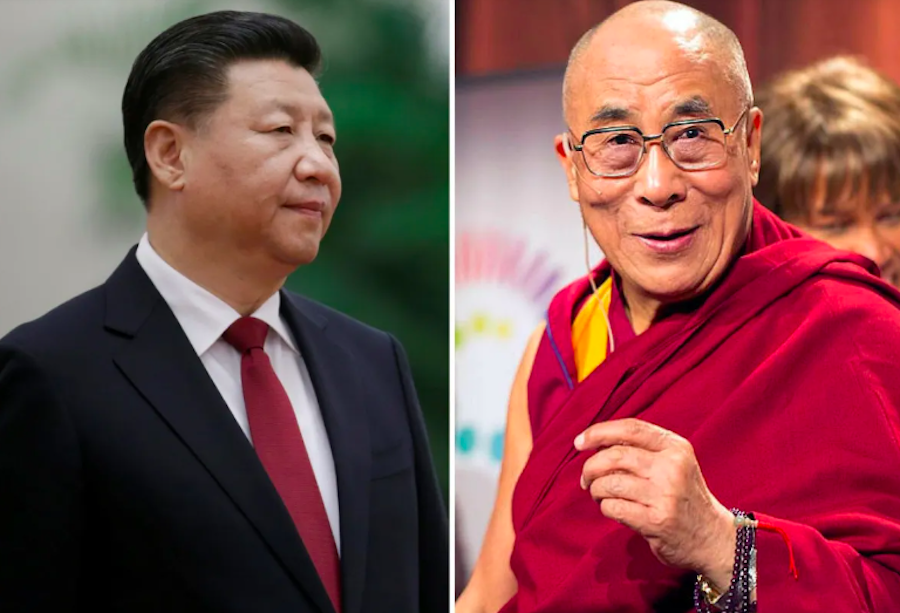India must be firm, but restrained in rhetoric
by G. Parthasarathy
THE mouthpiece of China’s Communist Party, the People’s Daily, claimed on October 14 that the Indians have become “more narrow minded”. It accused India of “provocation” on border issues with China and asserted that as “nationalism sentiment” rises, the Indians are turning to “hegemony” in relations with neighbours. The People’s Daily called on India to give a “positive response” to China’s efforts to resolve the border issue. Pakistan was referred to as one of the countries suffering from Indian “hegemony”, as India allegedly sought to “befriend the far (United States and Russia) and attack the near (Pakistan and China)”. The Chinese conveniently forget how they colluded against India with the Nixon Administration during the Bangladesh conflict in 1971 and with the Clinton Administration after India’s nuclear tests in 1998.
While China has relentlessly sought to denigrate and undermine India’s relations with countries in its Indian Ocean neighbourhood, even going to the extent of transferring nuclear weapons designs and knowhow to Pakistan, India has yet to fashion a coherent policy on the fears that China’s East and South-East Asian neighbours have of China’s efforts to dominate the Asia-Pacific region. Assured by the support it received after a visit by Deng Xiao Ping’s to Washington, China launched an unprovoked attack on Vietnam in order to “teach” Vietnam a “lesson” in 1979. Deng proclaimed that the “lesson” was meant to be similar to that administered to India in 1962. China again used force against Vietnam when it forcibly occupied the Paracel islands in 1974.There was yet another military engagement between China and Vietnam, when China occupied the “Johnson Reef” in 1988. In July 1992, China occupied Vietnam’s Da Lac Reef, establishing its first military presence there since the 1988 clash with Vietnam.
China claims that its territorial waters engulf 3 million square kilometres out of the total area of 3.5 million square kilometres in the South China Sea. Given such claims about its ever-expanding maritime frontiers, China is today engulfed in maritime disputes with the Philippines, Malaysia, Vietnam, Brunei, Indonesia, Japan and both North and South Korea. Earlier this year, China complained about an “official landing” by Malaysia on the islands it had claimed. The same week, Philippines President Gloria Macapagal Arroyo signed a decree laying claim to two islands that China had claimed. In February 1995, China militarily occupied the “Mischief Reef” in the Spratlys Islands, which was claimed by the Philippines. A month later Philippines forces seized Chinese fishing boats and destroyed Chinese markers in “Mischief Reef”. Malaysia and Vietnam have joined hands to counter Chinese expansionism, by jointly submitting a proposal to the UN Convention on the Law of the Sea questioning China’s claims and definition of its continental shelf. It is precisely such belligerence that prompts China’s Asia-Pacific neighbours to seek a US presence in the region. India would be well advised to seek a more wide-ranging strategic engagement with China’s Asia-Pacific neighbours like Vietnam and the Philippines in response to China’s policies of seeking to undermine India’s relations with its immediate neighbours.
While intimidating its smaller neighbours on issues of its maritime boundaries by its growing military strength, China finds its quest for hegemony hampered by two large Asian neighbours — Japan and India. It seeks to exclude the United States and India from regional forums by calling for the establishment of an “East Asian Community”. Concerned by such Chinese moves, Singapore’s Prime Minister Lee Hsien Loong asserted: “I think the US has to be part of the Asia-Pacific and the overall architecture of cooperation within the Asia Pacific”. This fear of Chinese expansionism is accentuated by the virtual paralysis in Japanese foreign policy in recent times.
The Chinese have spread fears about a revival of World War II Japanese “militarism” and put Japan on the defensive by protesting about the visits of Japanese leaders to the Yasukuni Shrine, which is dedicated to the memory of the soldiers killed in the service of the country. Having emerged as the largest trading partner of Asia’s three largest economies — Japan, South Korea and India — and a major trading partner of ASEAN, China appears determined to combine its economic clout and its military potential to emerge as Asia’s dominant power. Apart from using its maritime strength to enforce its territorial claims in Asia-Pacific, China now seeks to become a dominant player in the sea-lanes of the Indian Ocean. Hence its proposal to the Commander of the US Pacific Fleet that in return for the recognition of American dominance in the eastern Pacific, the Americans should acknowledge that the Western Pacific and Indian Ocean Regions as China’s sphere of influence.
China’s growing belligerence on the border issue should be seen in this context of its determination to be the dominant power in Asia. Given Japan’s readiness to succumb to Chinese pressures, Beijing’s rulers see an emerging India, which shows the potential for rapid economic growth while being respected in the comity of nations as a stable democracy, as an irritant and challenge to its larger ambitions. The unresolved border issue serves as a useful tool to keep India on the edge and under pressure. China knows that no government in India can agree to its claims on populated areas like Tawang in Arunachal Pradesh.
One of the greatest failures of China’s Communist revolution is that despite the Han Chinese constituting 91 per cent of the country’s population, the Chinese are paranoiac and insecure about their ability to handle 9 per cent of their minority population in the strategically important Buddhist-dominated Tibetan Autonomous Region and in the Muslim-majority Xinjiang province, despite bringing in Han settlers to reduce the indigenous populations to a minority. Tawang is seen as symbolically crucial in Chinese eyes as a centre of Buddhist spiritualism. By laying claim to the whole of Arunachal Pradesh, China puts India on the defensive, diplomatically and militarily, and seeks to influence gullible sections of the public in India to “compromise” on Tawang.
The Prime Minister told his Chinese counterpart in Thailand that India regarded the Dalai Lama as an “honoured guest” and a spiritual leader. Even as the dialogue with China continues, to maintain peace and tranquillity along our borders, India should not buckle under Chinese pressure, by reversing its decision on the Dalai Lama’s visit to Tawang. Firmness, together with restraint in rhetoric, and not appeasement, is required for dealing with a growingly jingoistic China.
The author is a former Indian High Commissioner to Pakistan









